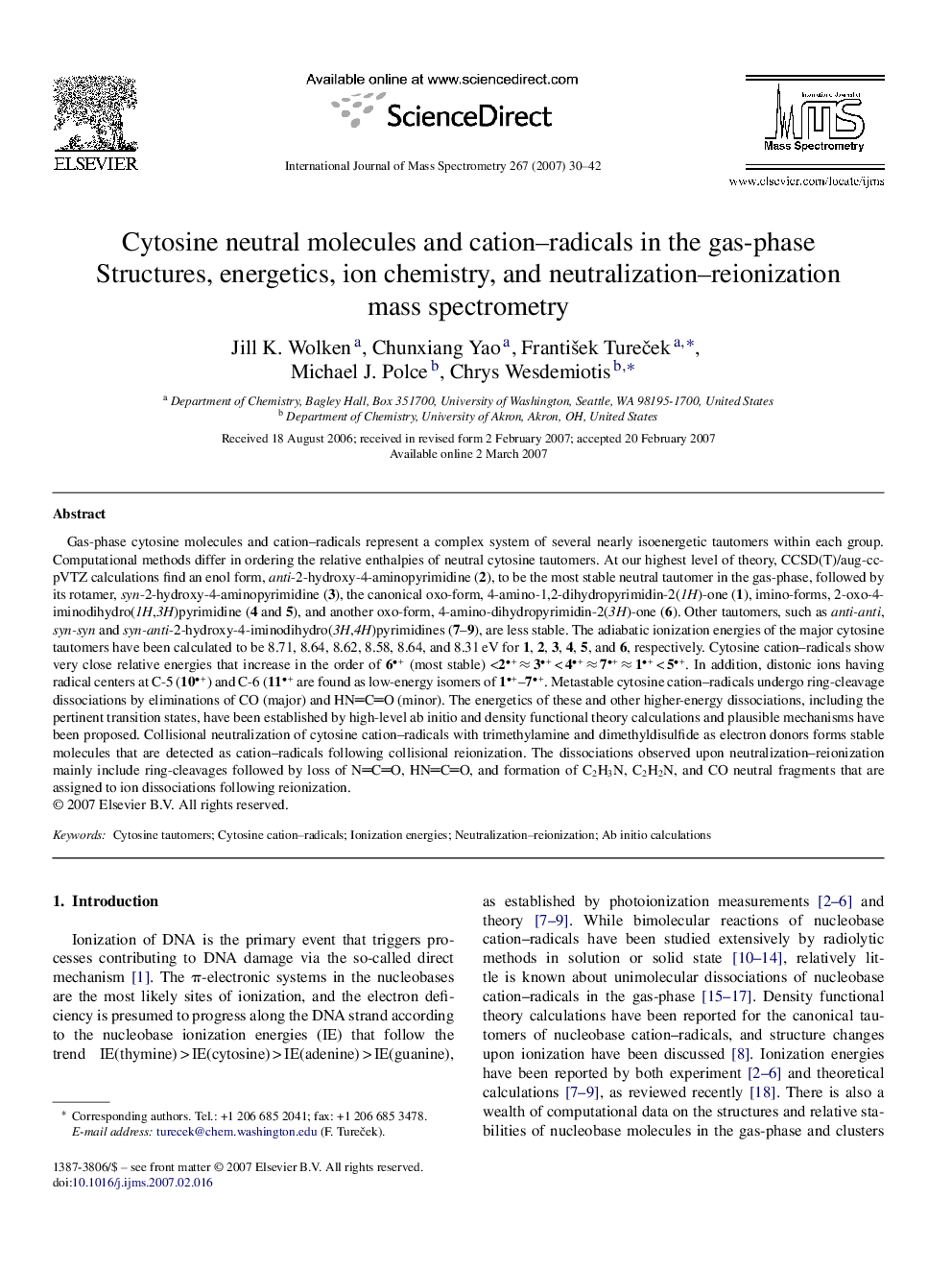| کد مقاله | کد نشریه | سال انتشار | مقاله انگلیسی | نسخه تمام متن |
|---|---|---|---|---|
| 1193348 | 1492367 | 2007 | 13 صفحه PDF | دانلود رایگان |
عنوان انگلیسی مقاله ISI
Cytosine neutral molecules and cation-radicals in the gas-phase
دانلود مقاله + سفارش ترجمه
دانلود مقاله ISI انگلیسی
رایگان برای ایرانیان
کلمات کلیدی
موضوعات مرتبط
مهندسی و علوم پایه
شیمی
شیمی آنالیزی یا شیمی تجزیه
پیش نمایش صفحه اول مقاله

چکیده انگلیسی
Gas-phase cytosine molecules and cation-radicals represent a complex system of several nearly isoenergetic tautomers within each group. Computational methods differ in ordering the relative enthalpies of neutral cytosine tautomers. At our highest level of theory, CCSD(T)/aug-cc-pVTZ calculations find an enol form, anti-2-hydroxy-4-aminopyrimidine (2), to be the most stable neutral tautomer in the gas-phase, followed by its rotamer, syn-2-hydroxy-4-aminopyrimidine (3), the canonical oxo-form, 4-amino-1,2-dihydropyrimidin-2(1H)-one (1), imino-forms, 2-oxo-4-iminodihydro(1H,3H)pyrimidine (4 and 5), and another oxo-form, 4-amino-dihydropyrimidin-2(3H)-one (6). Other tautomers, such as anti-anti, syn-syn and syn-anti-2-hydroxy-4-iminodihydro(3H,4H)pyrimidines (7-9), are less stable. The adiabatic ionization energies of the major cytosine tautomers have been calculated to be 8.71, 8.64, 8.62, 8.58, 8.64, and 8.31 eV for 1, 2, 3, 4, 5, and 6, respectively. Cytosine cation-radicals show very close relative energies that increase in the order of 6+ (most stable) <2+ â 3+ < 4+ â 7+ â 1+ < 5+. In addition, distonic ions having radical centers at C-5 (10+) and C-6 (11+ are found as low-energy isomers of 1+-7+. Metastable cytosine cation-radicals undergo ring-cleavage dissociations by eliminations of CO (major) and HNCO (minor). The energetics of these and other higher-energy dissociations, including the pertinent transition states, have been established by high-level ab initio and density functional theory calculations and plausible mechanisms have been proposed. Collisional neutralization of cytosine cation-radicals with trimethylamine and dimethyldisulfide as electron donors forms stable molecules that are detected as cation-radicals following collisional reionization. The dissociations observed upon neutralization-reionization mainly include ring-cleavages followed by loss of NCO, HNCO, and formation of C2H3N, C2H2N, and CO neutral fragments that are assigned to ion dissociations following reionization.
ناشر
Database: Elsevier - ScienceDirect (ساینس دایرکت)
Journal: International Journal of Mass Spectrometry - Volume 267, Issues 1â3, 1 November 2007, Pages 30-42
Journal: International Journal of Mass Spectrometry - Volume 267, Issues 1â3, 1 November 2007, Pages 30-42
نویسندگان
Jill K. Wolken, Chunxiang Yao, FrantiÅ¡ek TureÄek, Michael J. Polce, Chrys Wesdemiotis,